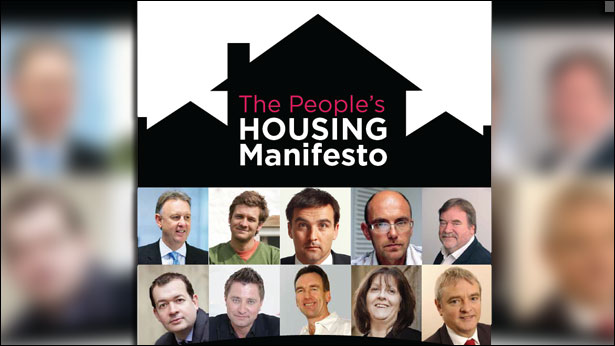
2 May 2014
Britain’s leading housing experts have suggested ten radical actions a future Government should consider if it wants to double the number of new homes that are built in the UK. And many of their recommendations involve further growing the self and custom build sector.
{TEASER}
With the next General Election now almost exactly a year away the suggestions have been collated into a ‘People’s Housing Manifesto’, which will be formally launched on Saturday at the start of National Custom & Self Build Week. The Week coincides with the huge Grand Designs Live exhibition, held at ExCel in London.
The People’s Housing Manifesto will be debated during the week and then copies will be sent to the leaders of all the main political parties urging them to adopt the suggestions for their own Manifestos.
At present the UK builds about 120,000 homes a year, when nearer 300,000 are needed, just to keep pace with the rate of new households being formed. This lack of supply is one of the main reasons why Britain’s new homes are among the most expensive in Europe. We also build Europe’s smallest new homes, and the quality and design of many of them is poor.
The panel of experts included broadcasters Kevin McCloud, Charlie Luxton and George Clarke, the leaders of many housing and planning institutions, chief executives of leading housebuilders, and senior local politicians.
The ideas that engendered the most support from the experts included:
- Not just building a string of new Garden Cities, and also scores of new Garden Towns and new Garden Villages too. The experts liked smaller projects as they are quicker to get off the starting blocks.
- Encouraging diversity by promoting more self and custom build, and community led-housing. Governments need to think small and local; rather than large and corporate. For example small local builders will generally produce better-designed, higher quality homes than larger providers. At present many NIMBY’s protest because of the ugly or inappropriate homes that are foisted on to them; more competition will result in wider choices and higher quality homes.
- We should encourage people to band together to commission and procure their own properties, and aim to build tens of thousands of more cost effective homes a year this way. In other countries this approach delivers custom designed properties that are 25% cheaper than anything the mainstream market is able to offer
- England’s dysfunctional land market needs to be reformed so that it provides much more land, at significantly lower prices. Councils have a key role to play here and they can use many mechanisms to help to deliver reasonably priced land for all types of house builder.
- A future Government should consider directly controlling the use of publically owned land for new housing – perhaps by creating a special “Housing Delivery Authority”. Instead of selling most its land to big housebuilders who often take ages to build, this new organisation could build quickly, ensure much better design standards, and provide a wider range of homes.
Other suggestions that had lots of support included allowing local councils more freedom to raise money to build new homes, focusing new development around existing (and future) transport hubs, launching a massive refurbishment programme to get 250,000 long-term empty homes back into use, and forming a new Housing Bank specifically to boost investment in all types of new housing.
The full Manifesto is available here.
Welcoming the ideas set out in the People’s Manifesto Ted Stevens, the Chair of the National Self Build, Association (NaSBA) said: “Over the next few months politicians from all the parties will be debating what they can do to sort out Britain’s housing crisis. We hope some of the suggestions in our Manifesto will grab their attention. I’m particularly pleased that so many of the experts feel that there should be much more self, custom and community-led housing built in the UK. A recent survey conducted by IPSOS Mori showed that around seven million people are keen on the idea of building their own homes – so there’s clearly plenty of demand for this form of housing.”



